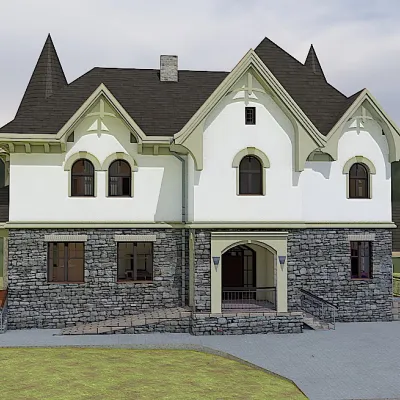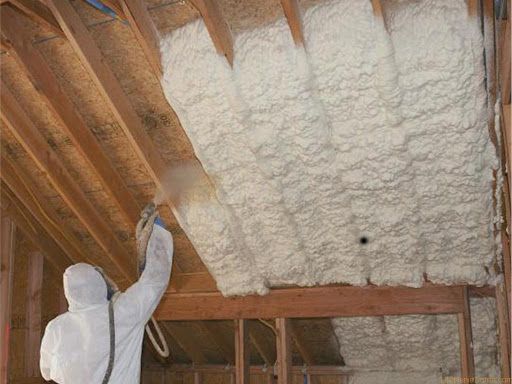Your flooring choice is one of the most important decisions you must make when it comes to improving your home. Material is an integral part of your interior. It also determines usage, installation complexity, and maintenance. Before making a choice, it is wise to know what is available and learn about each option's advantages and disadvantages.
How to Choose Flooring
There are several factors to consider when weighing your home flooring options.
It is essential not only to choose the type that suits your decor and style but also to consider the various materials available and their pros and cons.
It is best to first look at the rooms that need to be updated and then choose the type that works best for you, suits your home, suits your needs, and suits your budget.
Remember - different flooring materials are used in other rooms. For example, a tiled floor can be an excellent bathroom and kitchen option, but something like a stained wood floor with a statement rug would work best for a dining room or living room.
The look of the different flooring types or the flooring material used can also change the overall look of a room: materials such as vinyl tiles make the look cheaper, and solid wood floors add an element of luxury.
Types of Flooring Materials
There are five popular flooring materials used in residential homes, from classic hardwood to eco-friendly laminate. Additionally, several other lesser-used types come with their benefits. Use the below guide to choose which type or types are best for your space.
Hardwood Flooring
Hardwood continues to be the top choice due to its great looks and long-term return on investment.
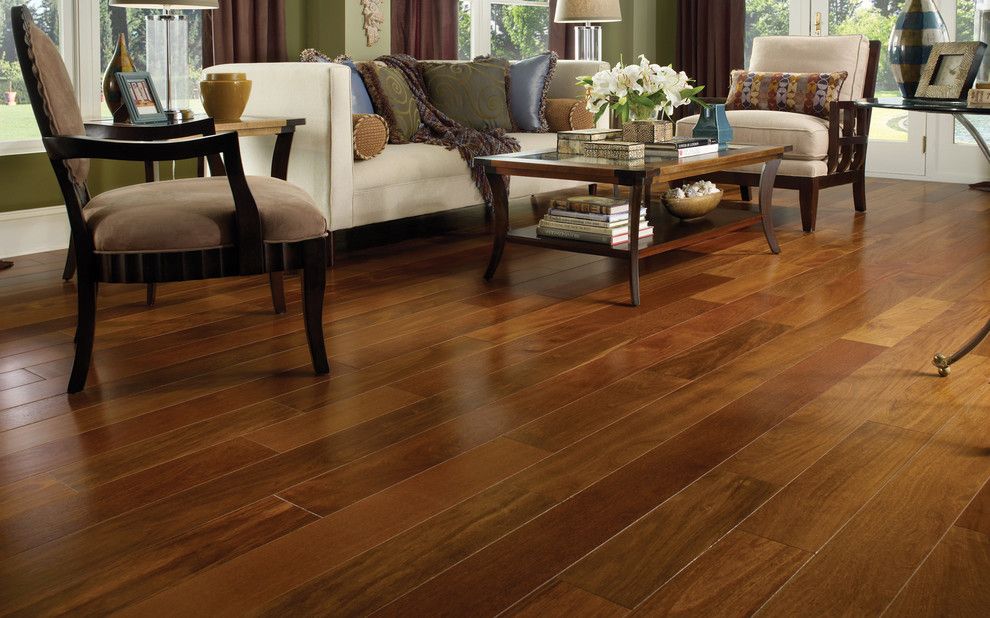
Pros:
- beautiful aesthetic appearance, not without reason half of the linoleum coatings imitate wood;
- relaxing effect on the nervous system - I do not know what the trick is, but I think it has something to do with genetic memory;
- Wood is an excellent insulating material, and therefore on the wooden floor can go barefoot even in winter (of course, if the gap between the boards are not very large);
- ease of operation. Wooden floors are easy to clean. You can spill vodka on them, ketchup, black currant jam, and in general, all that is in the house, and you can spoil only the paint. Paint your floors once every three to five years, and they look as good as new;
- You can easily install new flooring on old wooden floors
- Wooden floors can be made at any height from the substrate, practically without increasing the foundation's load. Besides, you can create any slope of the floor. It creates additional design possibilities.
Cons:
- relatively high cost;
- the complexity of the work;
- high labor costs in the construction of the floor;
- wooden floors are rarely perfectly flat;
- sometimes wooden floors squeak;
- can develop scrapes, scratches, and dents over time;
If your apartment or house has wooden floors, check the ventilation grates at the bottom of the walls. Very often, the ventilation grilles are covered with wallpaper or putty. It is not correct. If the basement stops accessing fresh air, fungus or mold can grow on the boards, or your floors will rot from dampness. It is prevalent in kitchens if an old faulty drain runs under the floor.
The primary defects of wooden floors:
Boards are loose, and debris gets in the gaps between the boards.
If the cracks are not too big (less than 1/4 inch), try caulking them with acrylic sealant. You can find this sealant in stores for sealing joints in hardwood floors, and it comes in several colors. If you are not going to paint the floor soon, try to match the color of the sealant. If the gaps are more than 1/4-1/3 of an inch, you need to tear down the boards and resurface the floor or do a new paint coat.
Old paint comes off in big chunks.
Some time ago, you or your predecessors painted the floor with harmful paint or unprepared floor surfaces. You can level the floor with a special screed for wood (a thing relatively rare and expensive) or make a new coating to fix this defect. In terms of price and labor costs, it will be almost the same.
The floor is not level.
Each board looks like a wave, and to walk on the waves and not to stumble could only Christ, and only once.
To correct this defect, you can level the floor with a special screed for wood (a fairly rare and expensive thing) or make a new coating. In terms of price and labor, it will be almost the same.
Floors that squeak
If the floors squeak in 1-2 places, try to determine the nail heads, where the joists pass under the boards, and screw the squeaking boards to the base with robust screws. If there are many such places, you need to overhaul the floor completely.
One or more boards are rotten and broken.
You will have to remove the rotten boards and put new ones in their place or make new flooring.
Price
Hardwood flooring costs $6 to $11 per square foot to install on average, with high-end prices ranging from $12 to $23 per square foot for both materials and installation. The installation includes finishing, trim, and removal of your old floor. Refinishing hardwood flooring costs $3 to $8 per square foot.
Laminate Flooring
Do you want the aesthetics of hardwood flooring, but you can’t afford it? The solution to your problem is laminate flooring. This type of flooring gives you a look and feel of hardwood floors but without the high cost.
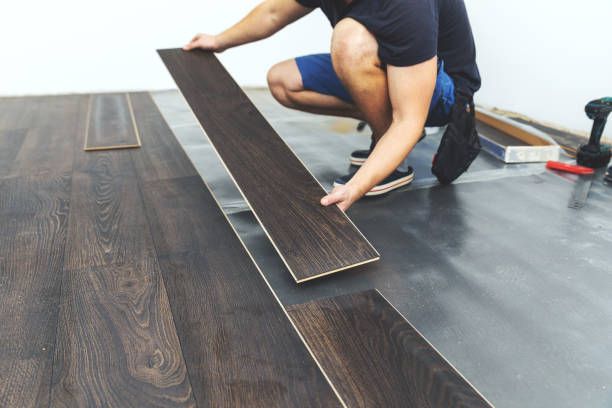
Pros:
- Wide availability. You can buy laminate almost everywhere.
- A wide range of design options. The laminate pattern usually imitates different parquet types but can mimic natural stone and tile and other materials, and a wide range of colors and shades can pick up laminate for almost any room.
- Ease of installation. There are detailed instructions for installing the laminate flooring on each package, and even a child can understand the instructions.
- Quick installation. It takes two of us 3 to 5 hours to install laminate flooring in a room of up to 30 m2 - no problem. You'll get tired of bending over. You can install faster only linoleum or carpeting, but before installing the skirting boards on the carpet or linoleum, you should wait for 1-2 weeks until the linoleum or carpeting has settled.
- Low cost. On average 1 m2 flooring costs $ 8-12 + $ 2-5 for work.
- Beautiful appearance. If the quality laminated boards are stacked correctly, the floor base is flat, and you get an almost perfectly smooth surface. Neither tiles, nor carpeting, or even linoleum will not give such an effect.
- The possibility of partial installation. It is especially true when repairing a room with furniture. If you will be remodeling a house in which there is no place to remove cabinets, beds, and another furniture at the time of repair, the technology of laying laminate flooring allows you to do the flooring in parts. For example, you can first do the flooring in one part of the room, then move the furniture to the finished flooring, finish laying the laminate, install baseboards, and put the stuff in place.
- The ability to lay laminate flooring alone. Modern laminate is usually laid without glue on the castle connection. It seems to be simple, but to dock boards, you must enter the tongue of the laid board in the groove of the already laid at an angle, and this requires the pre-assembly of the entire stacked strip. To do it alone in a room more than 3 meters wide is not very easy, although you can.
- Warm flooring. Flooring made of laminate is warmer to the touch than the coating of ceramic granite, tile, or natural stone, although the warmth of linoleum or carpeting is not comparable. Nevertheless, the use of film heaters allows you to make such a floor really warm.
- High wear resistance. Of course, the laminate flooring's durability is determined by the class of the laminate, and ultimately the price. Any modern laminate should serve in the apartment not less than 5-8 years, but very often, the laminate has to be thrown out not because of the wear of the laminate layer and the blame in this
Disadvantages of laminate flooring:
- Low water resistance.
It is the most significant disadvantage of laminate, sometimes capable of crossing out all the above advantages. Moreover, the top of the laminate is not a threat for it and the laminate, but the laminate boards have joints, and in these joints, during wet cleaning or spillage of various liquids gets water. When water gets in, the pressed wood fiberboard swells, and the protective laminate coating begins to break down at the joints. Such floors immediately lose their look, and you cannot restore the laminate flooring - only replace it.
Even the so-called water-resistant laminate (boards bottom greenish color) will not withstand constant water exposure, therefore laying laminate bathrooms, toilets, and even in kitchens and hallways is not recommended. However, even in standard rooms, laminate flooring is not immune to water. An acquaintance of mine had to have his laminate flooring replaced completely after a water pipe burst and water spilled all over the place for hours.
You cannot wash laminate floors the old granny way - a rag in a bucket and a mop - on no account possible. The laminate at this treatment will not last a year. Many times I had to observe and change the miserable results of such treatment of the laminate flooring. Partially silicone sealant helps solve the problem of water in the joints. When installing the laminate, you smear the joints with sealant and remove the excess adhesive with a plastic spatula. But again, all this is in case of short-term water ingress on the laminate floor. Some experts advise that in case of water in its joints to disassemble the coating and dry out in the fresh air, and then put it back, but I think it is easier to make the floor covering of another material, so as not to return to this issue, although the perfect flooring is still no and return sooner or later will have to.
- It requires the preliminary preparation of the base.
It is relevant when installing laminate on old wooden floors or uneven screed. If the subfloor is not level, the laminate boards will sag and squeak when walking. The base's maximum unevenness before laminate flooring installation allowed by the manufacturers - 2 mm/m2.
- The impossibility of restoration.
Laminate flooring can not be sanded and painted, and you can only replace it.
Prices generally run anywhere from $1 to $5 per square foot. And most laminate flooring costs between $2 and $4 per square foot.
Vinyl
If you are looking for a low-cost, durable, and easy-to-install flooring material, vinyl or linoleum might be the best fit for your project. These days, this synthetic flooring for the home is stable and effectively mimics wood, ceramic, and stone.
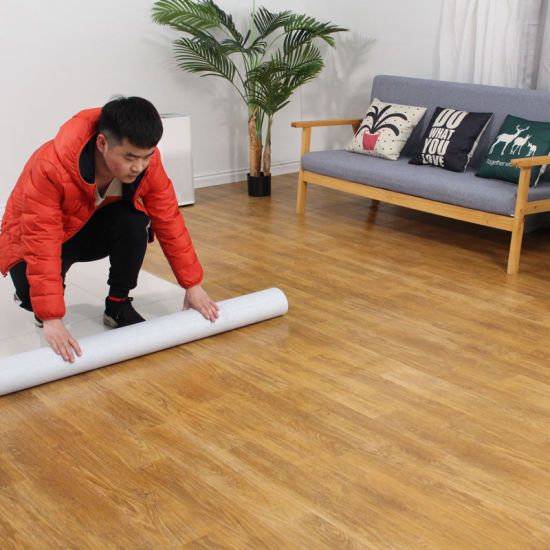
Pros:
- affordable
- versatile
- great for high-traffic areas
- easy to maintain
- DIY installation possible
Cons:
- less popular due to appearance
Sheet linoleum costs about $4 per square foot installed, while sheet vinyl costs around $3 per square foot.
Ceramic Tile Flooring
Ceramic and porcelain tile flooring are beautiful options for high-traffic and moisture-prone areas in the home.
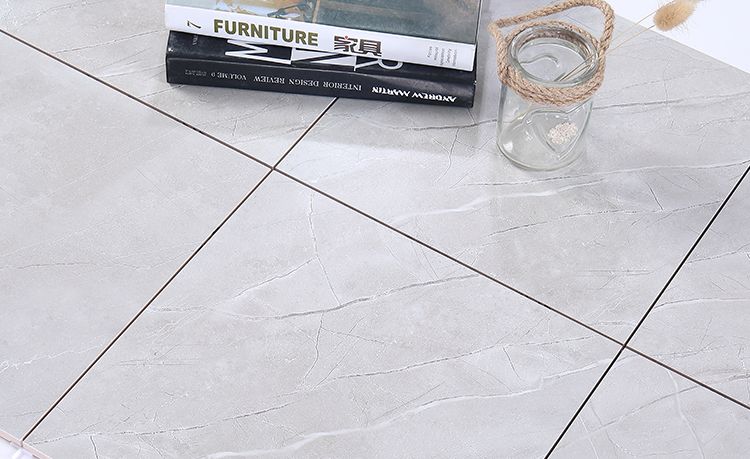
Pros:
- come in a variety of looks and designs
- durable
- non-porous or waterproof
- great for kitchens, bathrooms, and entryways
Cons:
- one of the most expensive options
- difficult to install
- can chip and scratch under heavy use
Ceramic tiles range from $0.50 to $35 per square foot. Ceramic is softer and less durable than porcelain, so they generally cost less. Porcelain tiles range from $3 to $35 per square foot.
Carpet
Carpet remains a favorite for many homeowners, especially for bedrooms.
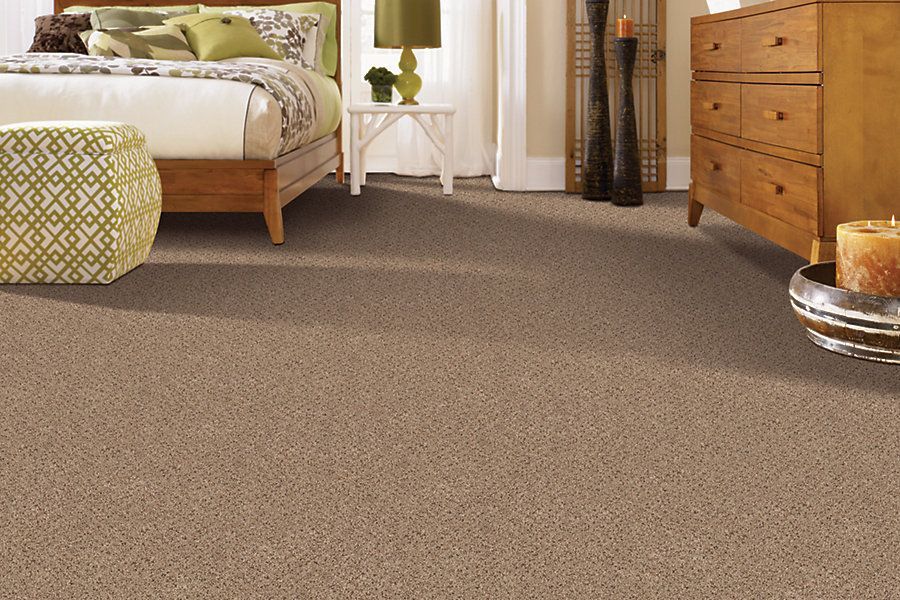
Pros:
- cost-effective
- soft and warm on feet
- multiple colors and designs available
- great for soundproofing
- stain-resistant varieties exist
Cons:
- difficult to maintain – professional cleaning recommended at least once a year
- can absorb smells
- not great for homes with pets
- not recommended for moisture-prone areas: kitchen, bathroom
Carpet installation costs $3.50 to $11 per square foot, making it one of the cheapest materials. The expense to install a carpet pad averages $3.75 per square foot. Padding usually isn’t included in the price of the carpet. Some companies may consist of free padding, but the padding cost is generally made up elsewhere, either in the cost of the carpet or in the installation cost. Padding by itself usually averages in cost between $0.35 and $0.65. It can be a good idea to plan $1.00 to $1.20 per foot, depending on the type of padding, to make sure that you enough in your budget for the padding.
Final Word
The five flooring options listed here are the most popular, but not the only ones. Browse through home decorating magazines and websites, and you will see many other flooring types such as stone tiles, stained concrete, terrazzo, and rubber flooring. So if you've looked at all the standard options, but nothing suited your taste and budget, feel free to expand.
Another opportunity to consider if you're on a budget is to renovate or paint your old floors. Repairing a worn wooden floor is much cheaper than replacing it, even if you have to hire a professional to do it. And painting is an excellent DIY project that can work on old wood floors, concrete, laminate, or even vinyl. Check out tutorials online to find out how.

